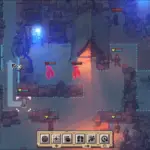It’s only when you’re a dozen or so hours into Wasteland 2 that to you’ll realise just how brown it is. And how American post-holocaust architecture is so rectangular. And how several individuals belonging to the same faction are just so similar. But you’ll be having enough fun, with detailed character development, (relatively) strategic battles, and a quirky sense of narrative humour that you’ll probably forgive these foibles in Wasteland 2.
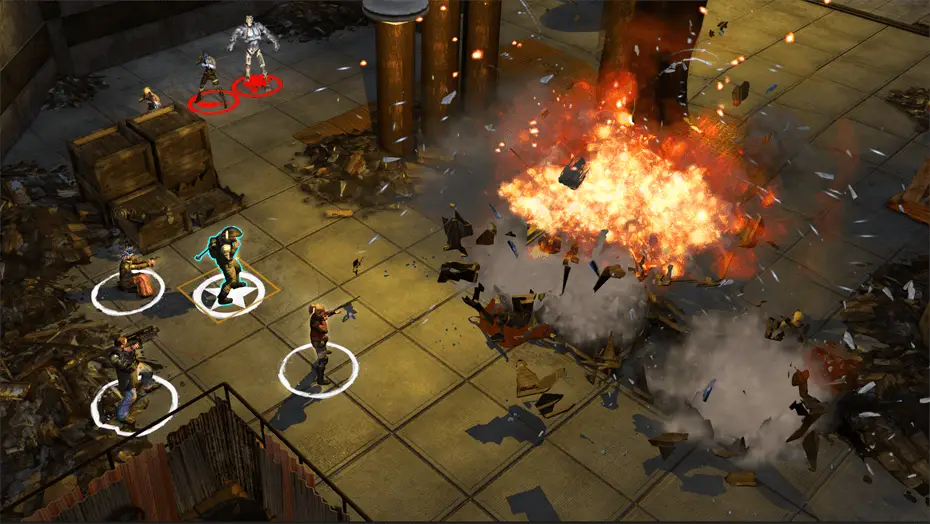
We are the Desert Rangers
The second title in the Wasteland series follows much the same structure as the others; offering a different twist than narratives involving a heavier does of survival mechanics. Your player character/s are part of the Desert Rangers from the outset: a rag-tag group of do-gooders who have come together to bring justice and protection to the down-trodden folk of America’s Midwest.
Through a series of place-based encounters involving combat and non-combat challenges, you’ll be fighting off your typical raiders, mutated animal,s and psychotic robots, as well as completing more mundane quests to help the good people of Arizona and beyond. The wider narrative, involving the search for a mysterious radio signal and how this mystery opens up the world proceeds along nicely, and the player is always discovering new places and new things to do. It’s not the most compelling or original story, but the core narrative is relatively focused and remains easy enough to follow throughout, something large, sprawling RPGs can fall victim to.
The script defines its characters and plot in this world solidly, even if it does rely on some tired old tropes over its run time. Having said that, the various factions are rounded out with some unique, irreverent traits; a group of well-spoken zealots who value good manners as the best way out of the apocalypse springs to mind. As long as you don’t expect the sort of level of realism or alternative history detail that games such as Fallout create, you’ll be fine.
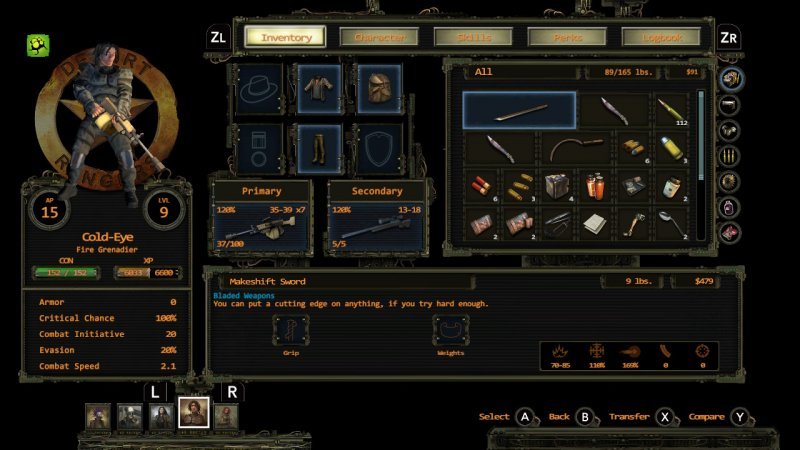
Becoming a Jack of all Trades will punish you
Character creation is detailed, allowing for precise design and type to be decided by the player. Smooth-talking pistelirios and suave, safe-cracking snipers are all very much on the cards, and indeed, such a spread of ability and specialism is absolutely vital. Wasteland 2 makes no bones about punishing you for not creating a party of well-balanced skills, weapons and perks.
The game’s default difficulty will prove a real hurdle with an unplanned, unfocussed party and many skill checks can only be beaten by ensuring your specialist character is fully focussed. Wasting points in doubling up skills and becoming a ‘jack of all trades’ will really set up the player to fail, and not ensuring a good balance of weapon skills will often lead to already-scarce ammunition disappearing faster than it already does. Fighting honey badgers with bare fists is not a welcome experience.
In this way, Wasteland 2 rewards the strategically-minded roleplayer who sees how these systems interlink, rather than roleplaying for the sake of it. This is an important consideration, and although common to most tactical RPGs, creating the wrong party really can mean the difference between progression or frustrating backtracking and grinding in this epic. Given that fast travel is unavailable, and movement, in general, is so slow, this is a key consideration. Wanting to roleplay your part on your own terms (a full roster of assault-rifle wielding, SWAT-like mercs etc) is not impossible, but it would certainly limit the game’s structural choices as well as rely on some very precisely chosen tactical encounters and decisions. As well as much reloading.
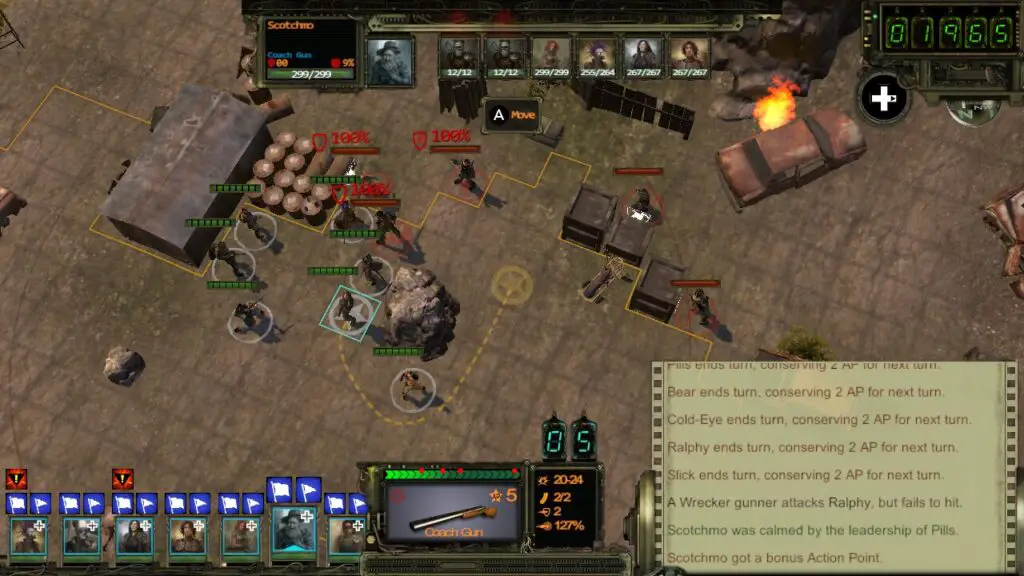
The systems themselves are solid, not dissimilar from any system of base attributes, derived skills (of which they are many, and some definitely more useful than others), and perks. Tactical combat is solid, but certainly not reliant on lots of clever abilities or interplay. You move; you find cover; you shoot, generally. There is a simple ‘overwatch’ analogue, and a precise aiming toggle (implemented as part of the Director’s Cut) allows for some variation, though in practice I did not use this often. The UI in this regard is solid and does its job, although there are quite a few clicks to get things moving and the hotkeys and inventory system are certainly reminders that this game is a fair few years old.
Visuals & graphics
Visuals are Wasteland 2’s weakest aspect, in some ways. To expand on my opening remarks, the game’s modular design and assets do tend to be very brown and muddy, and buildings and locations do blur into a general melange of architecture. Character models are quite simple, with little details hard to pick out. There are certainly some well-designed areas (the mutated Agri-Center and the clever greenery of LA spring to mind), but generally, the graphics aren’t front and centre for this experience and the repeated use of assets speaks to this.
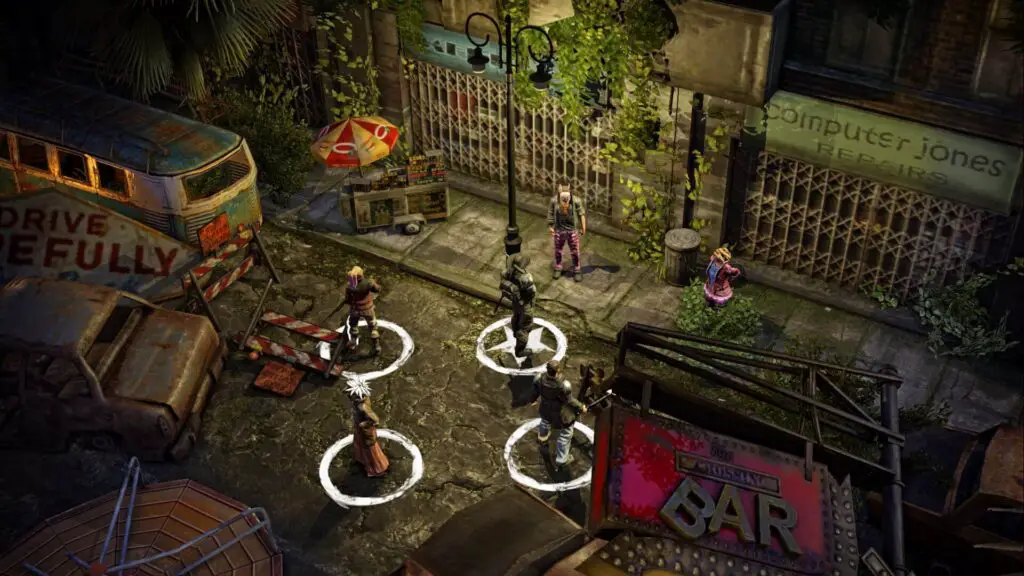
Having said that, to remake the whole game using the Unity engine for the Director’s Cut was a real undertaking, and the added camera flexibility and the simple cutscenes this allows does help the game world to breathe more, even if you’re still filling in blanks and ideas as a player sometimes. Sounds and the game’s music track are effective; additional voice-over work was added for the DC and this again adds depth to the world if you’re the sort of gamer who listens to the whole experience (as I am).



